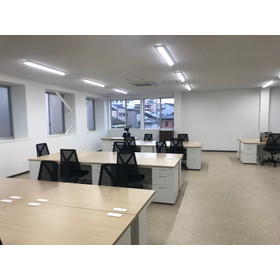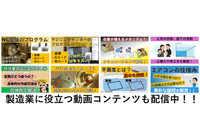news list
latest news

Our company's executive, Daisuke Matsui, participated as a panelist in the overseas human resource utilization seminar's panel discussion.
Our company's Executive Director, Daito Matsui, participated as a panelist in the following seminar panel discussion. ~Creating a Future of Working Together~ "The Option of Foreign Talent in the Era …
1~13 item / All 13 items
-
Notice of Exhibition Participation (28th Monozukuri World Osaka)
Our company will be exhibiting at the 28th Monozukuri World Osaka, scheduled to be held at Intex Osaka from October 1 (Wednesday) to October 3 (Friday)! Please be sure to visit our booth (in Hall 6B, jointly exhibited within the Osaka Industrial Bureau, booth number: 53-36). ============================= Exhibition Overview ============================= << 28th Monozukuri World Osaka >> Date: October 1 (Wednesday) to October 3 (Friday), 2025, 10:00 AM to 5:00 PM Venue: Intex Osaka Exhibition Content: - A wide variety of non-ferrous metal valves and piping components - 3D printed objects Overview: From metal processing to mastering processing and assembly using 3D printers.
-

Students challenge themselves to create systems that help improve productivity in factories.
In the regular course "Capstone Project" of the Faculty of Engineering, which proposes solutions to real challenges faced by companies, students worked on the project provided by our company: "Development of a factory operating rate measurement device using MESH." Details are introduced on the Sony Marketing website.
-

A case study of jig manufacturing using a 3D printer has been featured on Ricoh's website!
Our company manufactures NC lathe and leak testing jigs using a 3D printer! Details are also introduced on Ricoh's website. (Please refer to the related link below.)
-

A case study of jig production using a 3D printer has been introduced on the website of Kyoto University of Advanced Science!
We collaborated with students from Kyoto Institute of Advanced Science to jointly develop a fixture for leak testing using a 3D printer! More details are also introduced on the university's website. (Please refer to the related link below.)
-

Are you over-investing in equipment?! Here’s the basic knowledge on how to check from the perspective of company safety!
When you think about introducing new equipment, what criteria should you use to make a judgment? While it is important to assess profitability through break-even analysis for each product, it is also crucial to consider safety and evaluate it alongside the company's financial situation. When discussing a company's financial situation, the "balance sheet" (also known as the balance sheet or BS) is often mentioned. For those not in specialized departments like accounting, it may not be very familiar, and some may even shy away from it. In this document, I will first explain the structure of the balance sheet, then describe the characteristics of a manufacturing company's balance sheet, and finally explain the criteria of "fixed ratio" and "fixed long-term compatibility ratio" as benchmarks for introducing new equipment. I have often omitted detailed content and exceptions to keep the explanation as simple as possible, but I hope this helps you grasp the overall concept.
-

We have introduced a new detachable robot at our Osaka headquarters.
This is a robot that can produce automatically 24 hours a day! It is the third one at our Osaka factory. In addition, we have six small robots that can handle small quantities, promoting the automation of production. If you have any issues with quality or cost, please feel free to reach out to us!
-

A new machining center has been introduced at the Osaka headquarters.
This is a Mazak machining center. Our company also owns CADCAM software (MasterCAM), enabling more efficient processing. We manufacture fittings for air conditioning units and gas equipment, manifolds for medical devices, and copper pipe-related components for kitchen equipment.
-

A new hot forging machine has been introduced at the Chinese factory.
A new hot forging machine (servo press type) has been introduced at the Chinese factory. Due to its servo press design, it is possible to adjust the pressure and drop speed, allowing for production under optimal conditions for each item.
-

The new building has been completed at the Osaka headquarters.
This will be our new office. We aimed for a natural and simple yet warm atmosphere, based on white and wood tones!
-

Regarding the efficiency of purchasing operations, have you ever felt, "I have a sense of the problem, but I don't know where to start!"? We've consolidated that into one! 【Efficiency of Purchasing Operations】
Regarding the efficiency of purchasing operations, have you ever thought, "I have concerns, but I don't know where to start!"? This document will explore the effects of consolidating multiple suppliers into one, using examples to illustrate the benefits. You will see that the impact extends not only to the purchasing department but also to other departments and ultimately to the overall management of the company. There will be discussions about financial analysis along the way, but I have tried to present the information as clearly as possible. While various operations may seem disconnected, they are actually interconnected. I hope this serves as an opportunity to reconsider purchasing activities from various perspectives, and I would be grateful if those other than purchasing personnel, such as business owners, could take a look! 【Contents of this page】 1. Challenges in purchasing operations 2. Identifying hidden costs and risks 2-1. Costs associated with individual orders for each component 【Supplementary explanation】Reduction of interest burden through inventory reduction 【Supplementary explanation】Review of labor costs (converting fixed costs to variable costs) 2-2. Risks of having a single production site 2-3. Cost reduction (factors determining product cost) 3. Considerations when reviewing suppliers
-

Do you ever feel, 'I have a sense of the issues, but I don't know where to start!'? 【Streamlining inspection operations】
Regarding the efficiency of inspection operations, do you ever feel, "I have a sense of the issues, but I don't know where to start!"? In this document, we will examine whether the "company with the lowest price" is truly the best company for you, and whether there are hidden costs, using case studies. I believe you will understand that the impact extends beyond just the quality control department to other departments and ultimately to the management of the entire company. While each operation may seem isolated, they are actually interconnected. I hope this will be useful not only for those in charge of inspection operations but also for managers and newcomers. 【Contents of this page】 1. Problems in inspection operations 2. Identifying hidden costs 2-1. Is it enough to only look at the purchase price? 2-2. Reviewing processing methods 3. Things to be careful about when reconsidering suppliers
-
Is it really true that incorporating robots helps improve productivity? [Points to consider in robotization]
"To improve productivity, we will introduce new robots and promote automation!" Interest in automation in the manufacturing sector is increasing more and more. However, is the introduction of robots really contributing to improved productivity? Rather, could it be that we are now facing issues with stoppages and breakdowns, leading to a decrease in productivity compared to before? In this instance, we would like to examine the impact of robots on productivity using the case of metal processing parts produced through multiple processes. [Content of this page] 1. Which processes to automate 2. Impact of introducing automation equipment 3. Other points to consider
-

Fixed costs, variable costs, direct costs, indirect costs, marginal profit, break-even point... What are the definitions of each? A summary! 【Cost Accounting and Break-Even Point】
When involved in cost management of products in the manufacturing industry, various technical terms come up. Fixed costs, variable costs, direct costs, indirect costs, marginal profit, break-even point... "I have looked up the definitions of each and have a general understanding, but I have not yet reached a systematic understanding of how they relate to each other." I created this document in the hope of being of some help to those individuals. Many may feel that it remains at a basic level and may be unsatisfactory, but I would appreciate it if you could understand it as a resource for "understanding the first step."
